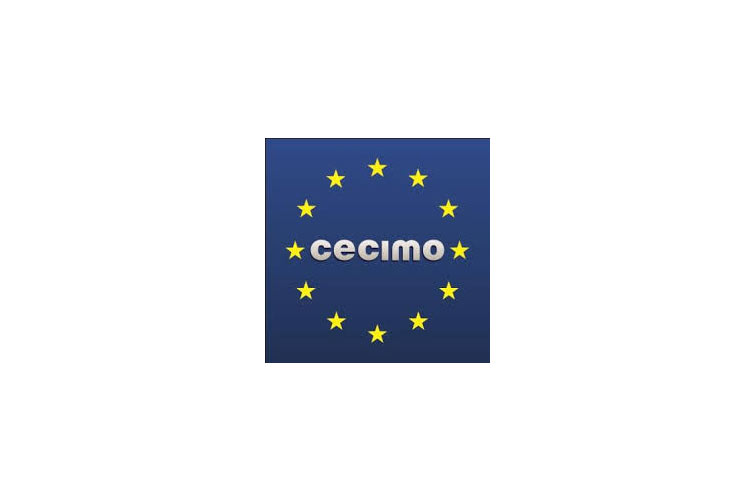The CECIMO General Assembly that took place in Fuschlsee, Austria on 21 June 2016 confirmed:
- The European machine tool production increased 5% to 24.3 billion euro in 2015;
- The machine tool exports are estimated to reach a record level of 19.0 billion euro in 2016;
- To tap into opportunities offered by digitisation, Europe needs to develop a new and forward-looking policy approach addressing the entire manufacturing value chain;
- European machine tool builders are concerned that production plants in Europe are slowly becoming obsolete.
Economic situation and outlook
Despite the global economy’s weakening growth and increasing volatility, the European machine tool industry ended the year 2015 on positive note. The machine tool production grew 5% to 24.3 billion euro. Economic activity in Europe shows stability and the growth is dominantly driven by strong consumer spending. The very accommodative monetary policy and recovering business confidence have also set the scene for a pick-up in investment in Europe. Combining this with the emerging markets’ calmer outlook, CECIMO estimates the machine tool production to stabilise this year, keeping its previous year’s level.
The developed markets were the main source of export growth in 2015. CECIMO exports posted 18.9 billion euro, just a fraction below the record year of 2012. Taking into account that Chinese government have so far demonstrated its ability to transform the economy relatively smoothly towards more consumption based growth, the European machine tool export outlook remains bright also this year. Machine tool exports are forecasted to grow to 19.0 billion euro in 2016.
Almost two thirds of CECIMO imports originate from other European countries. Therefore, machine tool imports to the region were supported by the stable economic conditions in Europe. In 2015, machines in value of 9.8 billion euro were imported. Despite the weakness of the euro causing imports of machines from outside the euro area to be more expensive, we expect the growth to reach to 3% in 2016.
The European machine tool consumption increased by 12% to 14.9 billion euro in 2015. The growth of consumption is expected to slow down to 1% and machines in an estimated value of 15.4 billion euro will be installed in 2016. The domestic order intake supports the forecast. The value of bookings by the domestic clients increased 2% in the fourth quarter of 2015 compared to the same period a year before. For the next three years, we forecast the European machine tool consumption to grow about 3.7% annually. “We are glad to see that the machine tool consumption in Europe shows good pace. Upgrading and modernising its production base is an essential condition to keep the competitiveness of European manufacturing sector at high levels,” added Dr Frank Brinken, Chairman of the CECIMO Economic Committee and Vice-Chairman of Starrag Holding AG.
Policy priorities
Digitisation of manufacturing
Digitisation re-defines the rules of global competitiveness in the advanced manufacturing sector. The use of digital technologies leads to significant gains in productivity, energy efficiency and mass customization, altogether generating great avenues for the re-industrialization of Europe. Against this background, Europe is required to move faster and generate the framework conditions needed for advanced manufacturers to tap into new opportunities.
To make Europe a centre of excellence for digital manufacturing, it needs to develop instruments generating new ways of collaboration between advanced manufactures and ICT actors. In particular, manufacturing SMEs from across Europe should be well integrated in the digital manufacturing transnational value chain. Various initiatives pertaining to digitisation have already been launched by regional, national and European authorities to help manufacturers generate innovative solutions, but to cope with the increasing pressures from competitors across the world, the EU must pool its resources and act in a coordinated manner.
Luigi Galdabini, President of CECIMO says: “We need large-scale initiatives launched by public authorities putting together various actors of digital manufacturing at transnational level. Digitisation is a key issue for machine tool builders and our companies are the heart of the value chain. For Europe to realize its re-industrialization, policy-makers must develop a holistic approach addressing the entire manufacturing value chain. To ensure that that digitisation supports Europe’s global manufacturing leadership, we need to develop forward-looking policies, instead of premature rules, underpinning the innovative character of the European machine tool builders.”
Upgrade of the machinery park
European machine tool builders are concerned that production plants in Europe are slowly becoming obsolete. According to available figures collected by some of CECIMO National Associations, the age of the machinery park in some Member States with a strong manufacturing base has reached 19.1 years while the lifespan of a machine tool, depending on its type, is around 15 years. Despite the existence of a political will to advance manufacturing in Europe, progress on investing in new machines and equipment by industrial users has been insignificant so far. Further delays in the recovery of investments in machinery and equipment weaken the entire competitiveness of the European manufacturing industry. Filip Geerts, Director General at CECIMO, adds: “The slowdown in demand for new equipment hampers the ability of developing breakthrough production technologies, as innovation is mainly driven by customer demands and cooperation between suppliers and users in the machine tool sector. We urgently need an action plan mobilizing the EU’s major policy instruments to put an end to the lack of investment in modern production equipment by end-users. If Europe wants to stay in the global race for advanced manufacturing, it needs to maintain a strong supplier base in Europe.”


